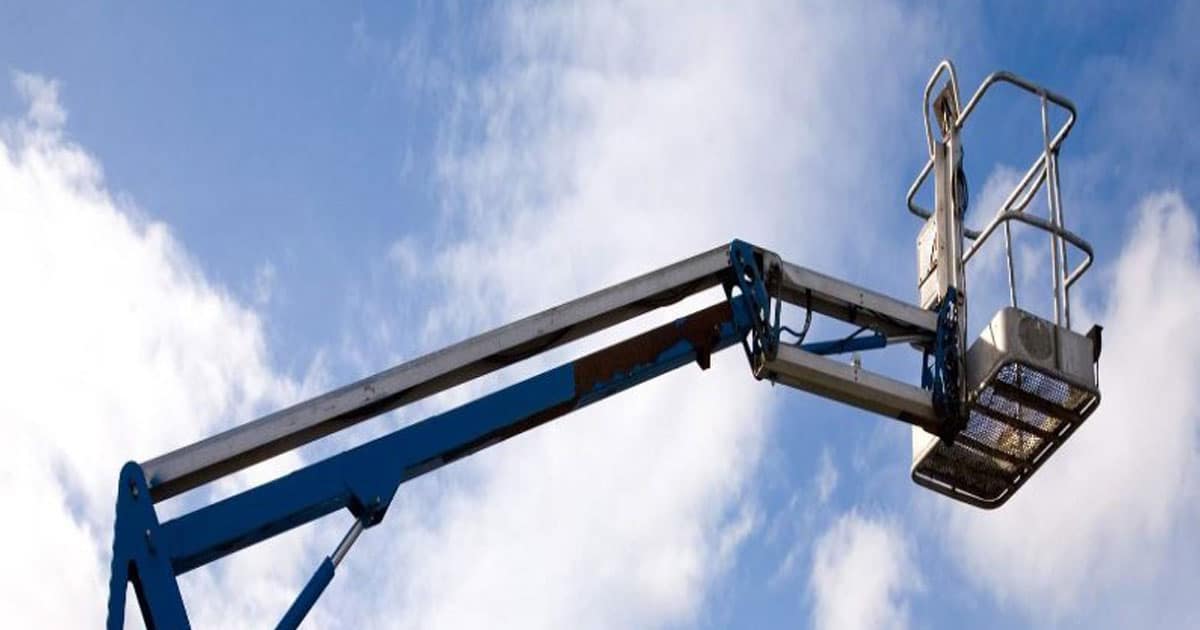Scissor lifts are one of the most versatile pieces of equipment in the material handling system that you can have in your possession for construction and maintenance projects. Whether it’s reaching high places, moving heavy items, or performing intricate repairs on a building’s exterior, a scissor lift can make your job much easier.
Here are some of the most common applications for scissor lifts in construction, maintenance, and repair.

What Is A Scissor Lift?
A scissor lift is a platform raised and lowered using a mechanism consisting of interlocking supports in a crisscross formation. These lifts are commonly used in construction, maintenance, and repair applications where workers must be raised to higher levels.
Scissor lifts can be either electric or hydraulic, with the latter being more powerful and capable of lifting heavier loads. Electric models are typically used indoors, while hydraulic models are better suited for outdoor use.
Lifts can be self-propelled or stationary, with the former being more maneuverable. Self-propelled units have wheels that allow them to be moved around the work site, while stationary units must be towed or lifted into place.
Most scissor lifts have a platform accommodating one or two workers and their tools and materials. Some larger models can accommodate more people and provide additional features such as forklifts or cranes.
Types of Scissor Lifts
There are five main types of scissor lifts:
Hydraulic Scissor Lifts
Hydraulic scissor lifts are either powered by an electric motor or compressed air, and can be utilised both inside as well as outside. Hydraulic scissor lifts are used most widely in warehouses, construction sites and for infrastructure projects.
Diesel Scissor Lifts
Powered by traditional diesel fuel, diesel scissor lifts are noisy and loud machines utilised widely in outdoor construction with adequate space for ventilation. Diesel machines come with large platforms useful for working in outdoor areas.
Electric Scissor Lifts
The electric scissor lift is one of the most common types in the construction industry today. Driven by a silent, electric-powered mechanism, the lift provides a cleaner solution for indoor spaces and are less bulkier compared to their diesel counterparts.
Rough-Terrain Scissor Lifts
Rough-terrain scissor lifts are designed for outdoor use on rougher terrain. They have large tires and a tough chassis to navigate uneven ground and bumps and can seamlessly take the weight of several workers as well as heavy duty equipment and tools.
Pneumatic Scissor Lifts
Pneumatic scissor lifts use compressed air to raise and lower the scissor arm. The lifts are commonly used in industrial applications, are less expensive than electric scissor lifts and more efficient in terms of loading capacity and feature a streamlined design.
How Are Scissor Lifts Used In Construction, Maintenance, And Repair?
Scissor lifts can be used indoors or outdoors and come in various sizes to accommodate different needs. They can be powered by electricity, gas, or diesel; some models are battery-operated.
- In construction, scissor lifts are most commonly used to raise workers and materials to the upper stories of a building under construction. They can also be used to move large objects around a construction site.
- Scissor lifts can be used to install or repair lights and ceiling fans. They can also paint walls or ceilings, wash windows, or clean gutters. Scissor lifts can be used for HVAC repairs or maintenance tasks.
- Regarding repair work, scissor lifts can fix plumbing or electrical issues. They can also be used to replace drywall or seal leaks. Scissor lifts can even be used to make small repairs to roofs.
Scissor lifts are typically very safe when used properly, but there are always risks associated with any machinery. It is important to read the manufacturer’s instructions carefully and follow all safety procedures to minimize the risk of injury.
Inspection and Maintenance of Scissor Lifts
Inspection and maintenance of scissor lifts are critical to ensuring these devices’ safety. Scissor lifts should be inspected regularly, and any damage or wear should be repaired immediately.
The main components of a scissor lift that need to be inspected are the lifting mechanism, the platform, the base, and the controls. The lifting tool includes all moving parts that allow the platform to rise and lower. The base is the stationary part of the lift that supports the weight of the platform and lifting mechanism. The controls allow the operator to raise and lower the platform.
Each of these components need to be inspected for damage or wear regularly. The inspection frequency will depend on how often the lift is used, but it should be at least once per month. Any damage or wear should be repaired immediately to prevent further damage or accidents.
Common Problems Encountered With Scissor Lifts
The most common problems encountered with scissor lifts are:
- Hydraulic fluid leaks, caused by various factors, such as worn seals, loose fittings, or damaged hoses.
- Electrical problems, such as faulty wiring, bad switches, or worn motor brushes.
- Mechanical issues that include worn gears, broken chains, or bent platform supports.
Scissor lifts are perfect for any construction, maintenance, or repair job. They provide the ability to reach higher heights and can be used in various applications. They are also economical for getting the job done. They require minimal setup time, and their use is safe and efficient. Scissor lifts offer numerous advantages that make them ideal for virtually any project involving lifting and transporting heavy loads from one place to another.
